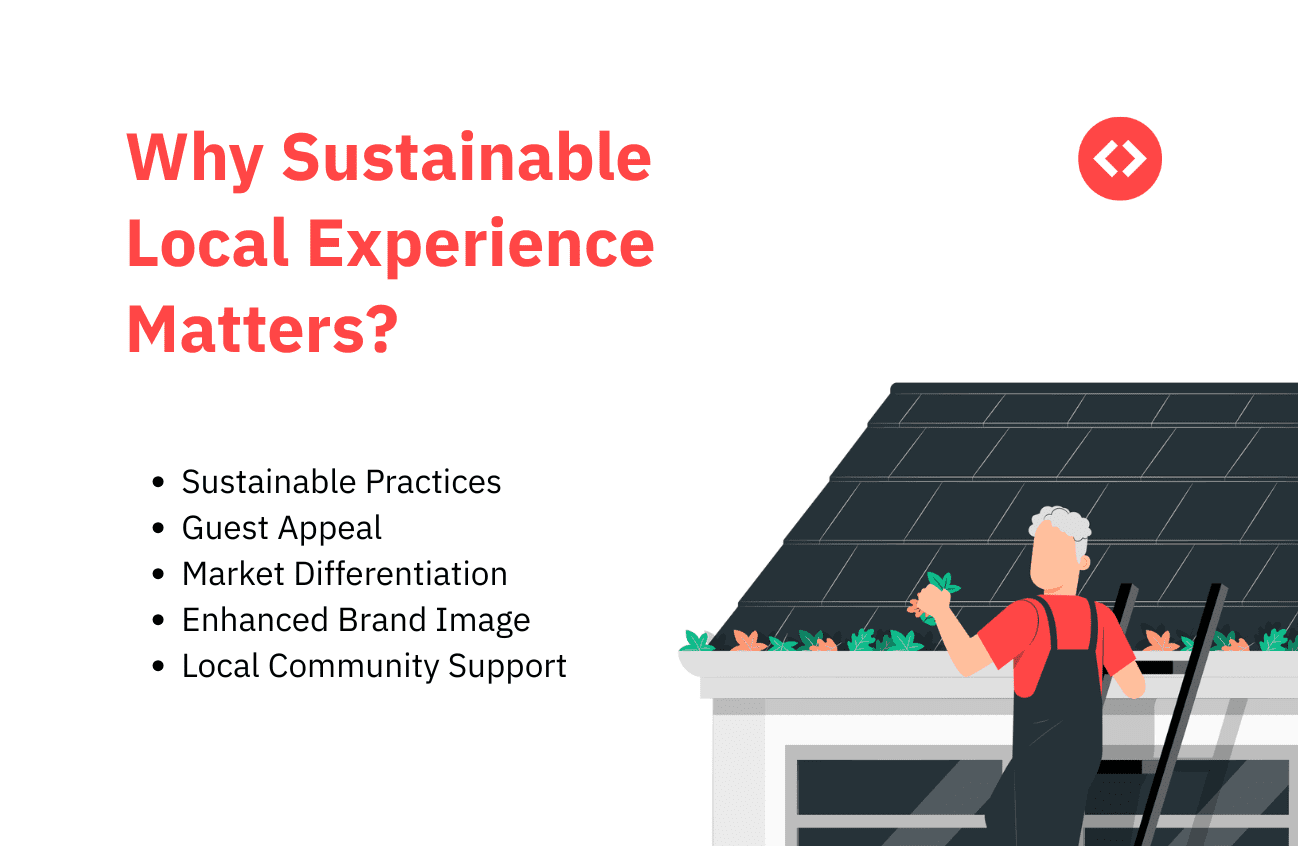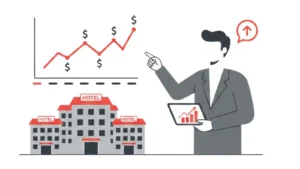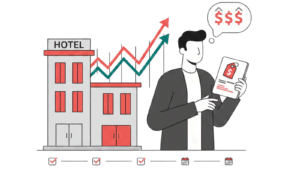Updated : May 20, 2025
Imagine a fine wine that takes years to mature, allowing its flavors to develop depth and richness. This is much like the concept of slow travelling, where experiences are savored rather than hastily consumed. For hotel owners and managers, embracing this philosophy through cultural immersion retreats offers an opportunity to attract guests seeking meaningful connections with local traditions and lifestyles. By promoting slow travelling, your establishment can transform into more than just a place to stay—it becomes a gateway for guests to explore the tapestry of local culture at a leisurely pace, creating lasting memories and fostering deeper appreciation for the destination.
Understanding Culturally Immersive Slow Tourism

What is it?
Slow tourism is a travel philosophy that emphasizes experiencing destinations at a leisurely pace, allowing travelers to deeply connect with the culture, people, and environment. Unlike traditional tourism, which often focuses on ticking off popular attractions in a hurried manner, slow traveling encourages visitors to immerse themselves in local life. This approach fosters meaningful interactions and authentic experiences, helping travelers gain a profound appreciation of the destination and its unique offerings.
Why it Matters?
Slow tourism presents an opportunity for hotel owners and managers to enrich their guests’ experiences while contributing positively to local communities. By promoting longer stays and encouraging guests to explore beyond the typical tourist hotspots, hotels can create personalized experiences that resonate with the values of sustainability and cultural appreciation. This not only enhances guest satisfaction but also supports local economies by directing tourists to lesser-known areas and small businesses.
Examples of Hotels Pioneering Slow Tourism:
Pioneering the slow travel movement are several small to mid-sized hotels that have seamlessly integrated this philosophy into their operations. For example, La Casa del Mundo in Guatemala offers guests a chance to explore the serene beauty of Lake Atitlán at their own pace, with locally guided tours showcasing traditional Mayan culture. Meanwhile, Hotel Villa Cipriani in Asolo, Italy, invites travelers to savor the idyllic countryside with leisurely walks and culinary experiences focused on regional specialties. These establishments exemplify how embracing slow tourism can lead to extraordinary guest experiences while fostering a deeper connection with the locale.
How to Curate a Culturally Immersive Slow Tour for Hotel Guests
1. Enhance Local Experiences
To curate slow tourism for hotel guests, focus on enhancing local experiences by partnering with nearby cultural and artisanal vendors. Offer guided tours to local markets and workshops, like pottery or cooking classes, allowing guests to engage deeply with the community. For example, a hotel in Tuscany might collaborate with a local vineyard to provide exclusive wine-tasting sessions, offering a unique taste of the region’s culture. This not only boosts guest satisfaction but can also lead to increased revenue through premium packages.
2. Promote Sustainable Practices
Emphasize sustainable practices within your hotel to appeal to the slow travelling ethos. Implement eco-friendly initiatives such as reducing waste, conserving water, and sourcing local produce for your restaurant. Independent hotels can highlight their commitment to sustainability by offering guests the option to participate in local conservation efforts or farm stays. These initiatives can be marketed as unique selling points, attracting environmentally-conscious travelers who are willing to pay a premium for responsible tourism.
3. Smart Technology Integration
Integrate smart hotel technology to enhance the guest experience without compromising the slow travel philosophy. Use smart room controls that allow guests to customize their stay and reduce energy consumption. For example, smart lighting and temperature controls can provide comfort while maintaining environmental responsibility. Highlighting these features can position your hotel as a forward-thinking establishment that caters to modern slow travelers seeking convenience and sustainability.
4. Offer Flexible Packages and Deals
Create flexible packages and deals that encourage longer stays, aligning with the essence of slow travelling. Offer discounts for extended stays or package deals that include cultural excursions and wellness activities. For instance, offer a “Stay Longer” package that includes complimentary yoga classes or meditation sessions, enticing guests to immerse themselves fully in the relaxation and culture of the area. This strategy not only increases occupancy rates but also enhances revenue through ancillary services.
5. Collaborate with Local Artisans
Collaborate with local artisans to offer exclusive in-house workshops or showcases that highlight regional craftsmanship. For example, host a weekly craft night where guests can learn from a local artisan about traditional weaving techniques or jewelry making. This provides guests with an authentic cultural experience while supporting local artisans financially, creating a win-win situation that embodies the principles of slow travelling.
6. Curate Personalized Itineraries
Offer personalized itineraries tailored to individual guest preferences for an enriched slow tourism experience. Gather information about guests’ interests during booking and curate itineraries that include leisurely-paced activities like scenic hikes or historical site visits at off-peak times. An independent hotel in Kyoto might suggest early morning temple visits followed by tea ceremonies, providing a serene alternative to typical tourist schedules.
Transform your hospitality approach today
Discover actionable strategies tailored for small hotel owners and managers creating unforgettable stays for your guests & expanding revenues for your hotel!
Start your 30-day FREE trial now!Tips & Tricks to Boost Slow Tourism & Cultural Immersions
- Promote Local Cuisine: Host cooking classes or tasting events featuring traditional dishes, encouraging guests to savor the slow food movement and its connection to regional culture.
- Engage with the Community: Forge partnerships with local businesses and community leaders to create enriching experiences that foster a deeper understanding of the local lifestyle.
- Offer Language Workshops: Provide short language courses or conversation groups to allow travelers to connect more meaningfully with the local population during their stay.
- Design Eco-Friendly Accommodations: Incorporate sustainable practices within your hotel to appeal to eco-conscious slow travelers seeking harmony with nature.
- Highlight Cultural Festivals: Inform guests about upcoming festivals and celebrations where they can witness and participate in authentic cultural traditions.
- Create Thematic Itineraries: Develop itineraries that focus on specific cultural themes, such as history, art, or music, allowing guests to explore these aspects at a leisurely pace.
- Encourage Extended Stays: Offer packages that incentivize longer stays, providing guests ample time to immerse themselves fully in the local culture and lifestyle.
- Facilitate Mindful Activities: Introduce yoga sessions, meditation classes, or nature walks that promote reflection and connection with the environment.
- Provide Local Guides: Employ knowledgeable local guides who can offer unique insights into the area’s history and customs, enhancing the slow travel experience.
- Promote Artisanal Crafts: Organize workshops where guests can learn traditional crafts from local artisans, supporting cultural preservation and providing hands-on learning opportunities.
- Leverage Storytelling: Share stories of the destination’s past and present through engaging formats such as fireside chats or multimedia presentations, drawing guests deeper into the region’s narrative.
Challenges of Slow Tourism
Extended Stay Management
- Operational Strain: Hotels need to adapt their services to cater to guests staying for longer periods. This requires more personalized services and attention to detail, impacting staffing and resource allocation.
Example: According to a report by Deloitte, hotels focusing on slow tourism must enhance their amenities and activities to engage guests over extended stays, which can strain operational capacities
Economic Impact
- Revenue Fluctuations: While slow travelling encourages longer stays, hotels may experience reduced room turnover. This can lead to periods of decreased revenue compared to traditional high-turnover models.
Example: A study by the World Tourism Organization highlights that while the average spend per guest may increase, the slower room turnover can impact overall profitability.
Sustainability Challenges
- Resource Management: Supporting slow travelling often means hotels need to implement sustainable practices, which might require significant upfront investment in eco-friendly infrastructure.
Example: A survey by Booking.com found that 87% of travelers want to travel sustainably, yet only 48% reported finding accommodations with adequate sustainable practices, indicating a gap that hotels need to bridg
Guest Expectations
- Enhanced Experiences: Guests seeking cultural immersion expect unique and authentic experiences, which can demand more from hotel staff in terms of knowledge and hospitality.
Example: Research published in the Journal of Travel Research shows that guests engaging in slow tourism prioritize cultural experiences over luxury amenities, necessitating a shift in service focus.
Marketing and Positioning
- Targeting the Right Audience: Hotels must effectively market their unique offerings to attract slow travelers, which can be challenging as these travelers often rely on personal recommendations and niche travel platforms.
Example: According to Skift’s Travel Megatrends report, hotels face challenges in reaching this segment due to its reliance on word-of-mouth and less traditional advertising channels.
Wrapping Up
Embracing slow travelling differentiates your hotel from more conventional offerings and aligns with an increasingly eco-conscious and experience-driven market. By adopting slow tourism principles, hotels can offer unparalleled cultural immersion retreats that captivate guests and leave a lasting impression. This approach not only enhances guest satisfaction but also fosters sustainable tourism, ensuring long-term benefits for your community and business alike.








